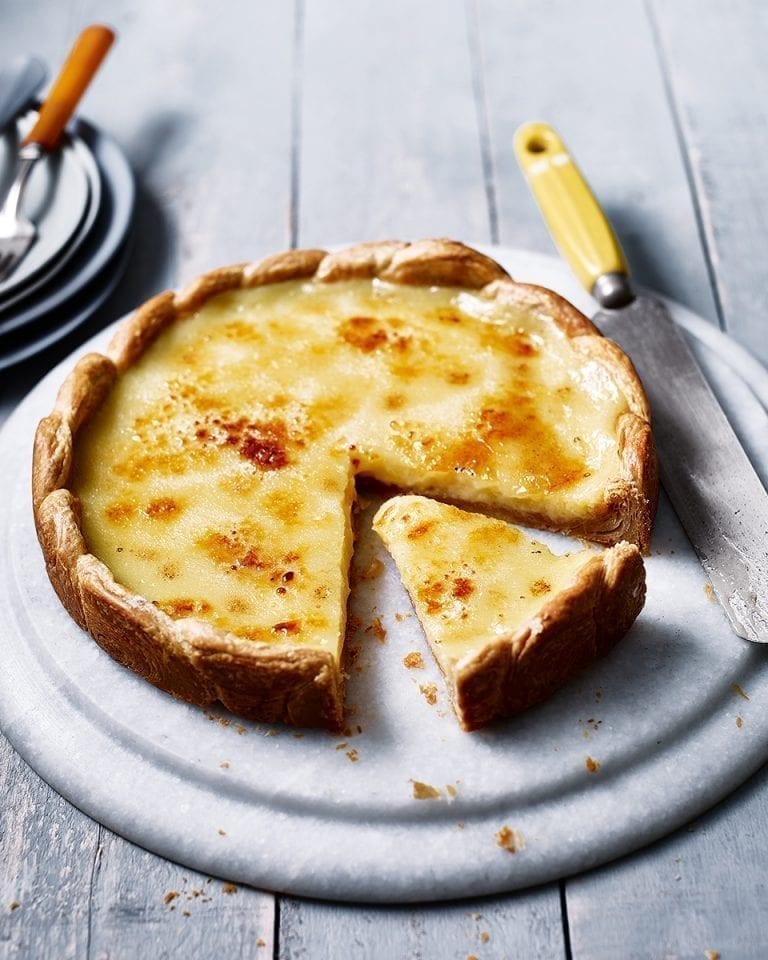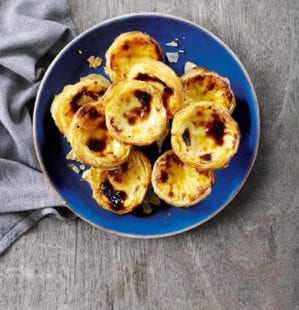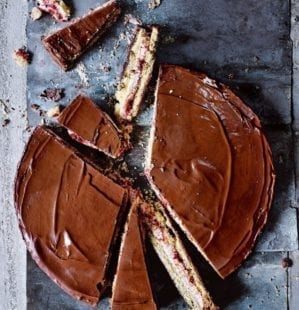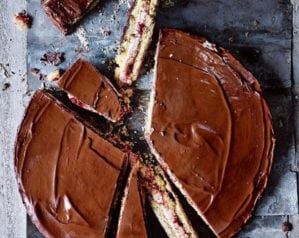
Giant Portuguese custard tart (pastéis de nata)
- Published: 22 May 17
- Updated: 18 Mar 24
In Portugal pastéis de nata are often eaten for breakfast. This giant version is bigger, better and can be enjoyed any time of the day.

(PS. We’ve got the small ones, too.)
-
Serves 10
-
Hands-on time 40 min, oven time 1 hour 7-8 min, plus cooling
Ingredients
- Butter for greasing
- 2 x 320g packs ready-rolled, all-butter puff pastry
- Plain flour for dusting
- 1 medium free-range egg white, beaten, for brushing
- 330ml whole milk, preferably gold top
- Pared zest from 1 lemon
- 1 cinnamon stick
- 40g plain flour
- 280g caster sugar, plus 50g (or 20g icing sugar; see tip) to serve
- 4 medium free-range egg yolks
You’ll also need…
- 23cm loose-bottomed cake tin and a digital probe thermometer
Method
- Heat the oven to 200°C/180°C fan/gas 6. Generously grease the cake tin with butter. Unroll the packs of pastry (remove the lining sheets), then tightly roll the pastry back up. Slice each roll into 16 equal discs, then, on a lightly floured surface, roll out each disc to 2-3mm thick. Line the cake tin with the pastry discs by carefully pressing each piece into the base and up the sides of the tin. You’ll need to go 3-4cm up the sides of the cake tin, overlapping the discs to make sure there are no gaps.
- Line the pastry case with foil and fill with ceramic baking beans or uncooked rice, then bake for 22 minutes. Remove the foil and the beans/rice, then brush the pastry with a little of the beaten egg white. Bake for 5-6 minutes more until the pastry has no grey patches and feels dry. You may need to push the pastry down a little if it has puffed up. Turn down the oven to 170°C/150°C fan/gas 3½.
- Meanwhile, put the milk in a medium heavy-based saucepan with the pared lemon zest and cinnamon stick. Heat until simmering, then leave to cool a little and infuse. Remove and discard the zest and cinnamon.
- Put the flour into a mixing bowl and whisk in a third of the infused milk to make a thin paste. Whisk in the remaining milk, then return the mixture to the pan and heat gently for 2-3 minutes, whisking constantly with a balloon whisk, until it has a thick custard consistency.
- Put the sugar in a small heavy-based pan with 115ml water. Heat gently to melt the sugar, then turn up the heat and boil for 4-5 minutes until the syrup reaches 108°C-112°C on a digital probe thermometer. Gradually whisk the syrup into the thickened milk – it will form a white liquid the thickness of double cream (don’t worry if it’s a bit lumpy). Strain it through a fine sieve into a jug, discarding any lumps.
- Put the egg yolks into a mixing bowl, and beat lightly, then pour over the strained milk/syrup mixture, stirring with the balloon whisk all the time until combined to form a custard.
- Pour the custard into the baked pastry case, then bake for 40 minutes until just set with a slight wobble. Leave the tart to cool for 5 minutes in the tin, then remove from the tin and transfer to a wire rack.
- When the tart has cooled completely, sprinkle the 50g caster sugar over the top and use a blow torch to caramelise the sugar. Serve sliced on its own or with crème fraîche or cream.
- Recipe from April 2017 Issue
Nutrition
- Calories
- 442kcals
- Fat
- 19g (9.3g saturated)
- Protein
- 6.7g
- Carbohydrates
- 60.3g (36.9g sugars)
- Fibre
- 1.4g
- Salt
- 0.7g
delicious. tips
If you don’t have a blow torch dust the top of the tart with icing sugar.
Make the tart up to 24 hours ahead but grill or blow torch the top just before serving. Keep the tart in a sealed container in the fridge.
Buy ingredients online
Rate & review
Rate
Reviews
Subscribe to our magazine
Food stories, skills and tested recipes, straight to your door... Enjoy 5 issues for just £5 with our special introductory offer.
Subscribe
Unleash your inner chef
Looking for inspiration? Receive the latest recipes with our newsletter














